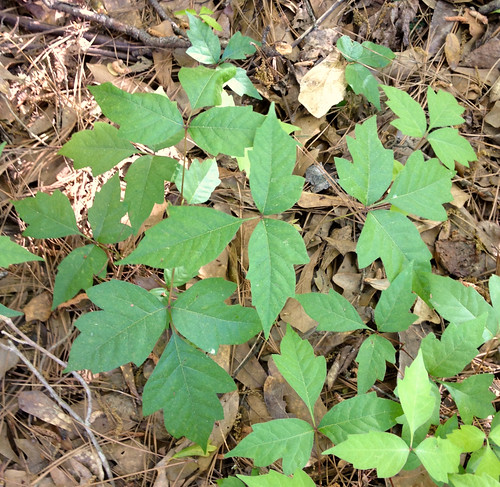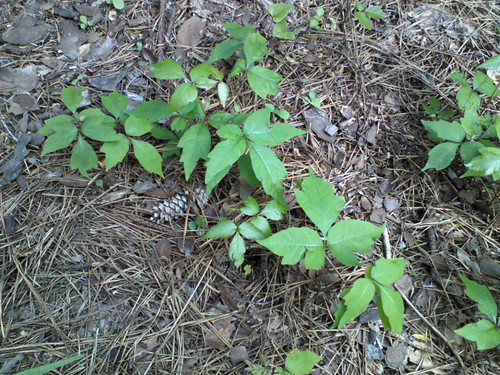Nowadays we used a lot of very power-dependent gizmos and so if you want to maintain anything near a modern lifestyle when the power goes out you'll need a generator. To try and do it with solar panels is possible but requires a lot more space and money.
In this post I'll be covering general safety tips, how the generate electricity, the pros and cons of different types of generators, what types of extra equipment you might need with a particular type of generator, and the preventative maintenance you'll need to perform on it to make sure it's ready to go when you need it. I won't be covering whole-house generators that are plumbed directly into your natural gas supply, other than to say while they can be sized to power your entire house, they have a high initial cost and a fairly high running cost. If that's the type of system you want contact an instillation company directly.
Generators are labelled by how many Watts of power they can produce continuously and for initial surge. An example would be "3250 Watts Continuous, 5050 Watts Surge". The surge Watts are necessary to run certain devices that require a lot of energy to start but once they're running they need less power to keep going. AC units, freezers, and fridges are examples of devices having a high, initial surge power demand and then a lower operating power requirement.
Generator Safety & Considerations
Placement
- Don't run inside the house or attached garage. Exhaust is poisonous!
- Running a generator in an unattached garage isn't a much better idea.
- Don't run it near an open window, door, or AC air intake (yours or your neighbors).
- The exhaust is HOT so don't direct it towards anything flammable or easily melted. It's not good for plants, either.
- Don't let rain, snow, or sleet fall on the generator. Set it on a dry surface.
- Be sure the generator is level and stable to insure proper flow of fuel.
- Check local or state laws and HOA regulations on the type, placement, hours of use, and fuel storage for generators. Texas generator laws.
Carbon Monoxide
- Generator exhaust contains carbon monoxide, a poisonous, odorless gas that irreversibly binds to blood hemoglobin, preventing the blood from absorbing/transporting oxygen.
- Always have a working carbon monoxide detector between the generator and the house to let you know if the wind has shifted, sending carbon monoxide towards the house.
- Pay attention to wind direction (see warning above).
Grounding
- Read the owner's manual to see how to properly ground your generator!
- To avoid possible, accidental shocks/electrocution the generator should be grounded.
- Grounding can be accomplished by running a jumper cable from the generator's grounding point to a piece of metal pipe or iron rebar stuck at least 12" into the ground. Attaching the ground end of the jumper cable to your water line is another good method.
Refueling
- Don't try to refuel a generator while it's still running. You and your house will end up burned beyond recognition.
- Let the generator's engine cool down to a touchable temperature before refueling.
- Don't smoke while refueling the generator. Using a match to see into the fuel tank is also a real bad idea.
- Don't store spare fuel inside the house or attached garage. Storing it in an unattached garage isn't much better. Store it in the yard somewhere protected, like a shed.
Power Cords
- Use a heavy-gauge power cord to run power to heavy-demand items such as freezers, fridges, or AC units.
- If possible, run individual, heavy-duty power cords from the generator to each heavy-demand item (fridge, freezer, AC) to avoid drawing too much current through a single power cord. If the power flowing through a cord gets too high it can catch fire!
- If you can't afford multiple heavy-duty cords get one super-heavy duty cord with three outlets at the end.
- Run the power cords through a window and then fill the window opening with blankets, foam rubber, towels, or other stuffing to reduce the chance of carbon monoxide entering the house.
Theft
- Generators are targets for thieves, especially in a big disaster.
- Write down the make, model, and serial number of your generator to help recover it if stolen.
- Figure out where you'll be running the generator and then cement into the ground some sort of large, steel ring near that spot. Chain the generator to that ring using a heavy-duty security cable and lock. Better yet, cement several rings into the ground and use several security cables to lock it down.
- If the cemented ring isn't an option, chain it to a tree, vehicle, or some other big, immovable object.
- If possible, after dark take turns staying awake to keep an eye on the generator.
Spare Parts
- 2-3 bottles of the proper oil required to maintain proper lubrication of the engine.
- 2-3 spark plugs
- 1-2 spare air filters
- 1 spare pull-start cord
- In the case of a gasoline or diesel unit, a spare carburetor is good to have on-hand
- Fuel line tubing. As the machine ages the fuel line naturally becomes brittle. Figure out what size interior diameter (ID) your generator needs and buy a few spare feet of fuel line (it's cheap) from a local hardware store.
- Funnel for adding oil
- Used oil container
- Battery charge maintainer if electric start
- Multimeter for troubleshooting power issues, assuming you learn how to use it.
Pull vs Electric Start
- Pull starts are mechanically simpler and therefore more reliable but also require a great deal of physical strength. Weak or injured people may not be able to get the generator running.
- Electric starts are much easier to fire up...assuming everything is working right. They require a battery which needs to be kept charged. Over time the battery naturally loses strength even if kept connected to a battery maintainer. After three years it becomes much less likely to work and probably should be replaced.
When you move a magnet past a piece of wire, the magnetic field will force some of the wire's electrons to be released and move along the wire. This movement of electrons is what we know as electricity and it can be tapped to power electronic devices...assuming the wire is long enough and the magnet is strong enough.
If you coil the wire into a ring the magnet only needs to move a short distance to start moving the electrons. In a generator, there is a very long piece of coiled wire that is rotated between a ring of multiple magnets. As this wire coil turns lots of electrons are sent down it to the power outlet where you plug stuff into the generator. The more wire, more magnets, and faster the wire coil is spun the more power the generator produces. The the resulting electricity is alternating current aka AC voltage with a full sine wave.
To spin the wire coil, generators use some sort of gasoline, diesel, or propane powered engine to rotate the coil at extremely high speeds. The type of fuel the engine uses determines a lot of the cost, physical size, pros, cons, extra equipment, and maintenance the generator will need. Keep in mind, while it might be nice to have power continuously, depending what you're running you don't have to run the generator non-stop. Running it for an hour every 3-4 hours will be more than enough to keep your fridge & freezer cold if you keep them closed.
I've already shown how to calculate how many Watts you'll need in the post Emergency Preparedness: Power Basics so let's move on to talking about what to expect from the different types of generators.
Propane Generators
I'm starting with propane-powered generators because in my personal opinion they are the most practical type for most people due to the easy & safe storage of fuel along with their relatively low maintenance needs. After studying everything about generators I chose a 3250 Watt, propane-powered generator and love it. The one I have is no longer made but the equivalent would be a Champion Model 76533 Propane/gasoline Dual Fuel Generator.
Pros:
- Fuel Storage - these generators use a standard, 20lb propane bottle like your propane grill which are readily available (most of the time). Propane doesn't degrade so you can store multiple bottles for years if necessary.
- Fuel Cost - Propane is generally much cheaper than cost of gasoline or diesel needed to produce an equal amount of power.
- Fuel Safety - while propane is highly flammable it is non-toxic. If you accidentally release some it'll quickly dissipate without causing an environmental or health risk.
- Runtime - a 20lb bottle will give 6-10 hours of run time depending on how much power you need from the generator. Three bottles will often be enough for most situations...but you can usually trade your neighbors electricity in exchange for their BBQ grill propane tank if the situation lasts longer than three days.
- Power Output - propane is a high-energy fuel so it can produce a lot of electricity. They usually start at 3000 Watts and can be found up to double that.
- Maintenance - since propane is a gas, when it evaporates it doesn't leave behind the gums and resins that gasoline or diesel do. This means lower carburetor maintenance! The carburetor is where the propane and air mix before going into the piston's ignition chamber (the part where propane is burned). Since the fuel is still unburned in the carburetor, when you turn off the generator fuel remains there. Gasoline and diesel will eventually evaporate form there, leaving behind goo which can prevent a carburetor from working the next time you need to run the generator. Propane doesn't leave goo behind!
- Size - to take full advantage of the power produced by propane the resulting generators are physically large. They will be up to 2-3 feet long and 2 feet wide.
- Noise - most propane generators are made for construction sites where noise isn't a problem. They will be as loud as a standard gas-powered lawnmower so running them is noisy! This is especially problematic at night...or when you don't want thieves to know you have a generator.
- Fuel Storage - keep in mind while propane tanks are safe to keep filled for long periods of time, the valve systems on the tanks have an expiration date. If the tank valve has expired, propane refillers won't refill it. This is really only a problem with the big, 50lb propane tanks that can't be swapped out for regular tanks at tank exchange locations, though.
- Fuel Tanks - if you have a propane generator, then you'll want at least three standard, 20lb propane tanks. Better still, several 50lb propane tanks, though those are heavy to move around.
- Maintenance (Tools) - proper oil for the engine, funnel for filling the oil, spark plugs, spark plug wrench, spark plug gap tool, used oil storage container.
- Maintenance (Oil Changes) - Usually oil needs to be changed after the first 30 hours and then every 100 hours of runtime after that or every year after, but check the generator's instruction manual to see what it says.
- Maintenance (Spark Plug) - Change every year.
Gasoline Generators
While there's a lot of good things about gasoline-powered generators, I just don't like their negative aspects. If I were to get one it'd be a Honda Model 663510 1000 Watt Generator.
Pros
- Small Size - gasoline is a very efficient fuel and so its popular for physically small, lower power demand generators. A 800 Watt unit can be less than 1.5 feet long and 1 foot wide, making them popular with campers who don't have high energy demands
- Quiet - because gasoline generators have a long history of use by RVers and campers, silencing technology on them is much more advanced.
- Linking - again due to the long use by RVers, certain gasoline-powered generators of the same make and model can be linked together to meet higher power demands. Honda's, in particular. This is useful if several family members, neighbors, or post-apocalyptic tribes want the ability to sometimes join together to run a higher power-needing device.
- Fuel Lifespan - gasoline begins degrading right after it leaves the gas station pump so long-term storage is problematic. You need to add some sort of fuel stabilizer to the gasoline can to slow down this degradation but even then the life is measured in months, not years.
- Fuel Safety - gasoline is REALLY flammable so storing three days worth (15-20 gallons) basically places a bomb on your property (only slight exaggeration!). Gasoline will dry out and irritate skin if spilled on it. A leaking gas can will cause environmental damage to the ground where it leaked. Cleaning up a gasoline spill creates a hazardous waste.
- Fuel Ethanol - most gas station gasoline is mandated by the government to contain ethanol. Ethanol causes corrosion of metal parts in an engine, causing hard-to-fix mechanical issues and shortening the generator's lifespan. Ethanol-free fuel can be found at some locations but it costs a lot more.
- Gas Cans - metal gas cans will last years but they cost a lot and if damaged they can start rusting. Plastic gas cans are cheap but turn brittle and have a short lifespan (less than two years, to be safe).
- Maintenance - a gasoline generator MUST be run under a load one a month otherwise the carburetor WILL get gummed up, making it unreliable. This month running is a pain in the A55!
Extra Equipment & Maintenance
- Fuel Tanks - you'll want at least 15 gallons of gas stored at all times.
- Fuel Stabilizer - if storing fuel for months you need to add some sort of fuel stabilizer otherwise it degrades and doesn't burn properly.
- Replacement Carburetor - its often best to swap out a clean carburetor while cleaning a gummed-up one because you forgot to run the generator some month.
- Maintenance (Tools) - proper oil for the engine, funnel for filling the oil, spark plugs, spark plug wrench, spark plug gap tool, used oil storage container.
- Maintenance (Oil Changes) - check owner's manual
- Maintenance (Spark Plug) - check owner's manual
Diesel Generators
Diesel generators have a number of benefits over gasoline but also some big drawbacks, depending on your needs. A diesel generator was actually my second choice based on the pros and cons. I like this Generac Model 6864 unit as it is made by the company that makes my propane-powered generator.
Pros
- Durability - diesel generators are usually used where they need to run a long time and so are generally the most reliable type of unit.
- Power - because of the power density of diesel fuel, they are often the most powerful units one can buy. If you are wanting to run a lot of stuff at the same time and you have a place to store the fuel a diesel generator makes sense.
- Fuel Storage - diesel actually has a fairly low flashpoint, making storing a large amount of it much safer than gasoline or even propane. Diesel fuel cans are colored yellow to distinguish them from gasoline cans.
- Fuel Cost - if the diesel is going into a generator you can buy the untaxed "farm" aka "off road" diesel...but if you are caught using to fuel a vehicle driven on the road you can be fined a lot. Off road diesel contains a red dye to indicate its untaxed. If traces of the red dye are found in your diesel vehicle you are in a lot of trouble. The government wants its tax money!
- Cost - SUPER expensive!
- Physical Size - with power comes size and so diesel generators will be bigger and heavier than even propane ones.
- Fuel Stability - diesel degrades in a different way than gasoline. It actually supports bacterial growth so stabilizing it requires a diesel-specific fuel stabilizer.
- Fuel Viscosity - diesel fuel is thick and in cold temperatures it can gel up and become hard to pour!
- Maintenance - like a gasoline generator, the diesel unit needs to be run at least once a month to keep the carburetor clean and all the seals tight.
Extra Equipment & Maintenance
- Fuel Tanks - you'll want at least 14 gallons of gas stored at all times such as in this farm equipment diesel tank.
- Using Up Old Fuel - if you don't have a diesel truck using up old fuel close to going bad becomes a problem. If you are using farm diesel then you can't even burn it in a diesel road truck or car.
- Fuel Stabilizer - if storing fuel for months you need to add some sort of antibacterial diesel stabilizer otherwise it degrades and doesn't burn properly. Due NOT use a fuel stabilizer designed for gasoline!
- Replacement Carburetor - like with a gasoline unit, its often best to swap out a clean carburetor while cleaning a gummed-up one because you forgot to run the generator some month.
- Maintenance (Tools) - proper oil for the engine, funnel for filling the oil, spark plugs, spark plug wrench, spark plug gap tool, used oil storage container, diesel storage tank
- Maintenance (Oil Changes) - check owner's manual
- Maintenance (Spark Plug) - check owner's manual
As a member of the Amazon Influencer's Program, I am required to inform you that Amazon will pay me a portion of the sale price of any of the products linked above.













